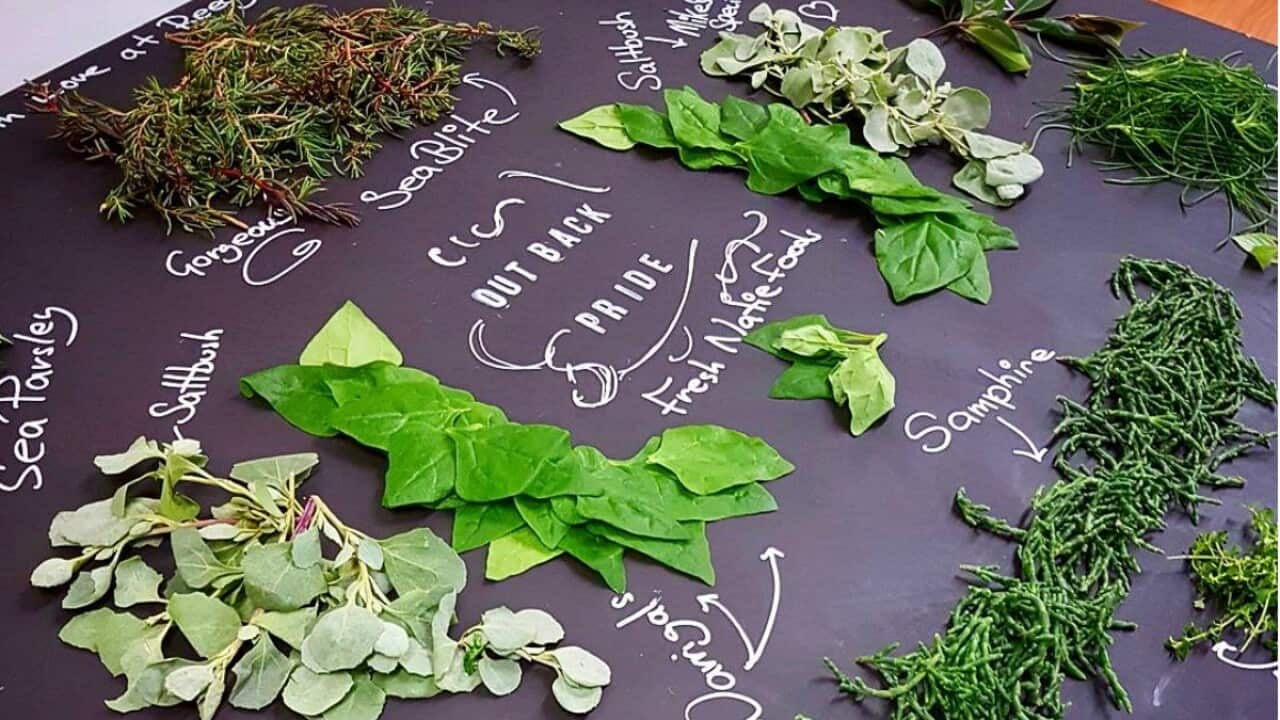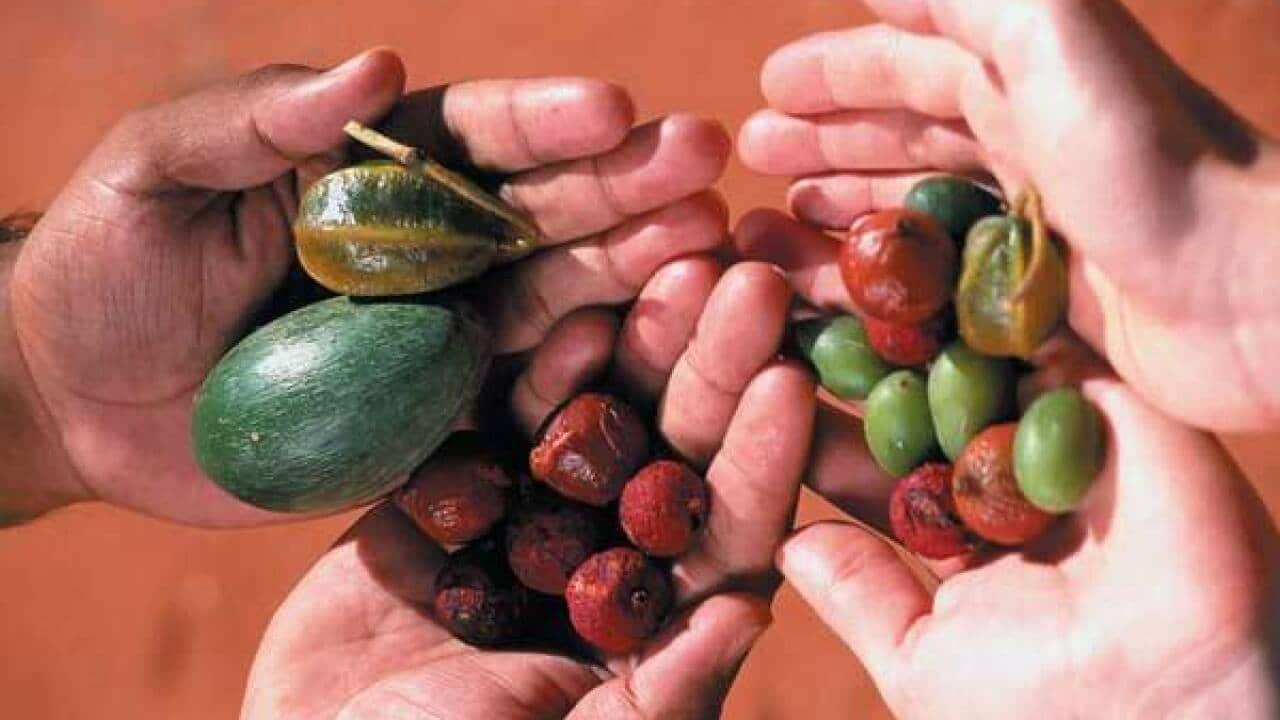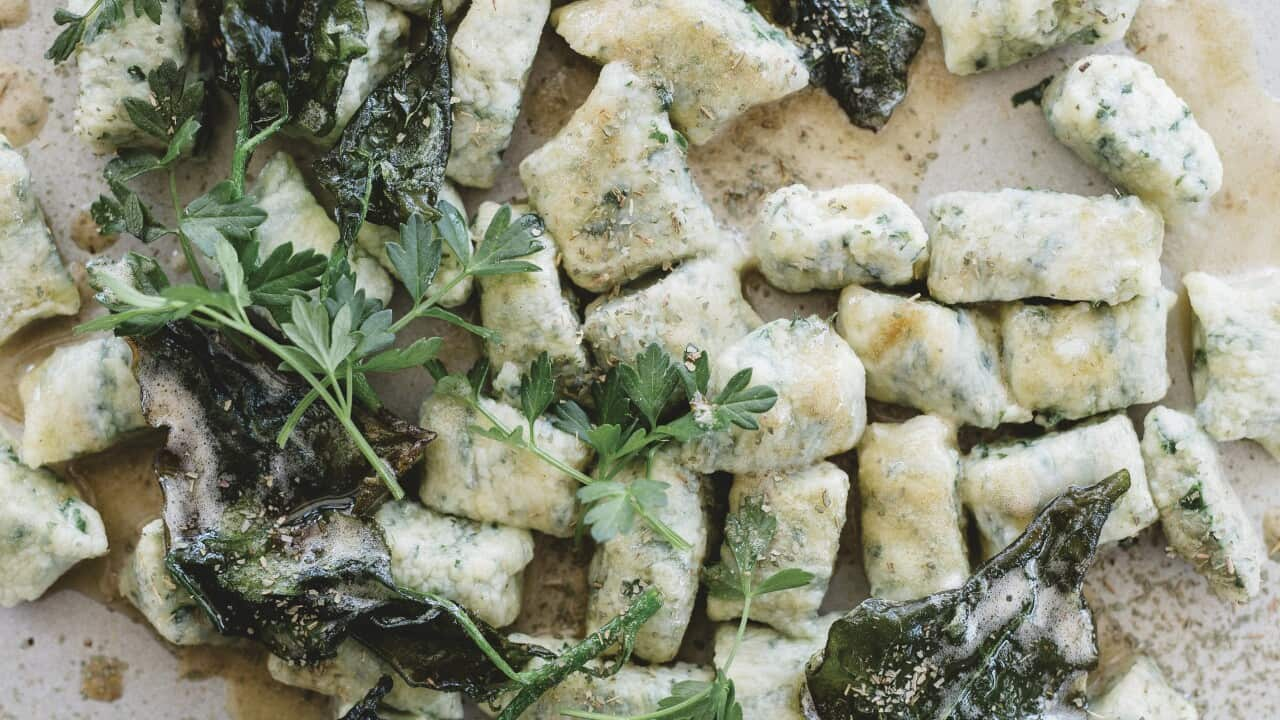For , nothing announces late winter quite like the arrival of the bush tomato. It's been a staple part of the diets of Indigenous people for millennia.
Brown, who is a long-time advocate of bush foods, says that the fruit – known as kutjere – starts to appear in the landscape during August. It symbolises all the natural abundance of the Central Desert, one of the most arid regions in the world.
“Our bush tomato season is in August and September ... but if we have good rainfall, the plants will keep producing because of the moisture in the air,” she tells SBS Food. “It’s a scraggly little bush, with a big bunch of these bright yellow bush tomatoes on it. But its root system will keep sending down tap roots to find moisture, that go six, seven, eight-foot down.” She gives an awed laugh. “This little annual that grows in the desert gives you antioxidants, vitamin B, vitamin C, minerals. That’s why Indigenous people respect it so much.” Brown, a Ngangiwumirr and Eastern Arrernte woman who was born in Darwin first fell in love with bush foods as a child, travelling around the Northern Territory with her parents.
Brown, a Ngangiwumirr and Eastern Arrernte woman who was born in Darwin first fell in love with bush foods as a child, travelling around the Northern Territory with her parents.

Mark Olive and Rayleen Brown handling saltbush at Parrtjima festival's recent cooking demonstrations in Alice Springs. Source: Parrtjima
“It stems from this nomadic lifestyle we had as a kid – there were six kids in our family and [our parents] were just following work around the territory in the 1970s,” she recalls. “A lot of my childhood was spent exploring the bush, collecting bush foods, bringing them back to my mum. I also spent time with my nanas, travelling out into the desert, learning about the meaning of food for Indigenous people.”
Brown started the Indigenous catering business two decades ago, a lifetime before ingredients like Kakadu plums and quandong appeared in restaurants and markets around Australia. The long-running catering business sources native ingredients – like wattleseed, acacia and desert raisins – harvested by Indigenous women working on country. For Brown, this is about celebrating the relationship between bush foods and the women who source it. These days, the popularity of bush food – which has been embraced by high-profile chefs such as - risks turning it into a novelty. But, as Brown says, each ingredient is part of a complex web of connections, bound by cultural practices such as rituals, stories and songs.
The long-running catering business sources native ingredients – like wattleseed, acacia and desert raisins – harvested by Indigenous women working on country. For Brown, this is about celebrating the relationship between bush foods and the women who source it. These days, the popularity of bush food – which has been embraced by high-profile chefs such as - risks turning it into a novelty. But, as Brown says, each ingredient is part of a complex web of connections, bound by cultural practices such as rituals, stories and songs.

Parrtjima showcased native ingredients, such as seared kangaroo fillet with bush tomato relish and wattleseed spiced damper. Source: Parrtjima
“We also have bush orange and bush passionfruit, the native fruit that comes out in the rain – it’s a cross between a passionfruit and custard flavour,” she grins. “The really beautiful thing is the cultural way of harvesting. Each bush food has a song or story that goes along with it and when you receive these seeds and berries, they’ve been sung to. These ladies have such a connection with [these ingredients]. They are still following those protocols they’ve had for thousands of years.”
The really beautiful thing is the cultural way of harvesting. Each bush food has a song or story that goes along with it and when you receive these seeds and berries, they’ve been sung to.
is a pioneer of bush foods in Australia. When the acclaimed chef and restaurateur was growing up in Wollongong, he used to make regular trips to Bundjalung country, on the coast of northern New South Wales, where his family comes from.
“Up there, it’s the home of the lemon myrtle and the aniseed myrtle,” he smiles. “There was also black wattleseed, which my aunties would roast up and it would have this lovely coffee scent. Then I did my apprenticeship in the late '70s and early '80s – and started incorporating all these ingredients, started foraging down in Wollongong.”
Olive, who ran the trailblazing Sydney restaurant in the '90s and introduced many Australian chefs to native produce, would cook with these ingredients for the following decades. At this year’s edition of Alice Spring’s festival, Olive collaborated with Brown on dishes such as seared kangaroo with kutjere relish and wattleseed damper. He says that native ingredients reflect the country’s geographical diversity. “You’ve got that grow along the ocean and the grey saltbush that will grow inland,” he says. “River mint is also amazing – it’s like spearmint and peppermint [mixed] together.”
“You’ve got that grow along the ocean and the grey saltbush that will grow inland,” he says. “River mint is also amazing – it’s like spearmint and peppermint [mixed] together.”

Mark Olive has introduced many Australian chefs to Indigenous ingredients. Source: Parrtjima
Olive says that cooking with bush foods means researching its context and history, understanding how its flavours and textures tell a story about culture and place.
“You have to do a bit of research: with lemon myrtle and wattleseed, the best result is to steep it into fat like butter or oil – it’s a great carrier and will keep the flavour,” he says. “When you rub native thyme between your fingers, it has five different flavours and scents. You can smell rosemary, oregano, eucalyptus, native thyme and lavender and it can be incorporated into so many dishes. That’s what’s so special about it.”
As bush food becomes more mainstream, Olive says we need to centre Indigenous cultural knowledge and ensure that we are harvesting these plants ethically. Brown, who believes that we should make bush food central to our country’s culinary knowledge, concurs.
“When the explorers came, they didn’t want to eat bush food – they thought it was poison,” she says. “We need to adopt Indigenous food into learning – and when this learning happens, we should invite an Indigenous elder to talk about it. Australia needs to open its mind and its heart to the real history of our food, to the thousands of people who lived here before settlement who were thriving on this land and taking care of it. If we take care of the land, the land will give back to us.”
National NAIDOC Week (8 – 15 Nov 2020) celebrates the history, culture and achievements of Aboriginal and Torres Strait Islander peoples. Join SBS and NITV for a full slate of . For more information about NAIDOC Week or this year’s theme, head to the . #NAIDOC2020 #AlwaysWasAlwaysWillBe
First Nations flavours

How to make your own Indigenous herbs and spices rack








